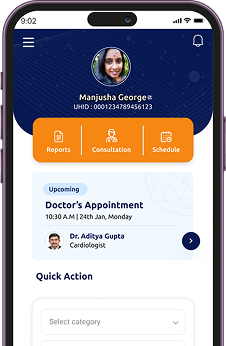Bone Marrow Transplant in Children: A Comprehensive Guide
Bone marrow transplantation (BMT) is a life-saving medical procedure that has revolutionized the treatment of serious illnesses in children. By replacing damaged or diseased bone marrow with healthy stem cells, BMT offers a new lease of life for children facing cancers, genetic disorders, and immune deficiencies. Understanding this procedure is crucial for families exploring advanced medical care.
What is Bone Marrow, and Why is it Important?
Bone marrow is the soft, spongy tissue inside our bones that produces essential blood components: red blood cells (for oxygen delivery), white blood cells (for immune defense), and platelets (for blood clotting). These critical functions are disrupted when bone marrow fails, leading to severe health problems.
What Happens in a Bone Marrow Transplant?
A BMT involves infusing healthy stem cells into a child's body to replace damaged bone marrow. The stem cells can come from the child's body (autologous transplant) or a donor (allogeneic transplant). Once transplanted, these cells settle in the bone marrow and produce healthy blood cells.
When is a Bone Marrow Transplant Needed?
Doctors may recommend a transplant for children with conditions such as:
-
Blood cancers like leukemia and lymphoma.
-
Blood disorders like aplastic anemia, thalassemia, and sickle cell disease.
-
Immune deficiencies such as Severe Combined Immunodeficiency (SCID).
-
Genetic or metabolic disorders like Hurler syndrome and adrenoleukodystrophy.
Types of Bone Marrow Transplants
-
Autologous Transplant: The child's stem cells are collected and preserved before receiving intensive treatments like chemotherapy. These cells are then reintroduced to regenerate healthy bone marrow.
-
Allogeneic Transplant: Stem cells are obtained from a donor, a sibling, an unrelated volunteer, or a parent. This type is often used for genetic disorders or cancers requiring complete marrow replacement.
-
Umbilical Cord Blood Transplant: This procedure uses stem cells collected from a newborn's umbilical cord. It is a great option when a closely matched donor isn't available.
The Bone Marrow Transplant Journey:
The process involves several stages:
-
Preparation (Conditioning): High-dose chemotherapy or radiation eliminates diseased bone marrow and suppresses the immune system to reduce rejection risks.
-
Stem Cell Infusion: The healthy stem cells are infused through a central venous catheter, similar to a blood transfusion.
-
Engraftment: Over 2-4 weeks, the transplanted stem cells settle in the bone marrow and produce new blood cells.
-
Recovery: Close monitoring is essential to detect complications like infections, organ dysfunction, or graft-versus-host disease (GVHD). Recovery can take months to a year.
Challenges and Risks:
Although BMT offers hope, it comes with risks:
-
Infections: With weakened immunity, children are more vulnerable.
-
GVHD: In allogeneic transplants, donor cells may attack the child's tissues, causing complications.
-
Organ Damage: Chemotherapy or radiation can affect organs like the liver or heart.
-
Delayed Recovery: Some children may take longer to recover or face engraftment failure.
Post-Transplant Care:
Healing doesn't end with the procedure. Post-transplant care is critical:
-
Preventing infections: Strict hygiene and prophylactic medications help protect against infections.
-
Regular check-ups: Frequent blood tests and follow-ups ensure the transplant works and complications are addressed early.
-
Nutrition and diet: A balanced diet supports recovery while avoiding raw or undercooked food minimizes infection risks.
-
Emotional support: Counseling helps children and families cope with recovery's physical and emotional demands.
Why Consider Health Tourism for BMT?
Health tourism opens doors to world-class medical care at more affordable costs. Countries like India have become hubs for advanced treatments, offering top-tier hospitals, skilled specialists, and personalized care. VivaVel Health Tourism ensures families receive seamless support, from hospital selection to travel arrangements.
The Impact of Bone Marrow Transplants:
A successful bone marrow transplant can be transformative. It can cure previously untreatable conditions, improve quality of life, and allow children to live healthy, fulfilling lives. Advances in medical technology, such as reduced-intensity conditioning and gene therapy, continue to improve outcomes and make the procedure safer.
Final Thought:
Bone marrow transplantation in children represents a beacon of hope for families grappling with life-threatening illnesses. While the journey is challenging, the outcomes can be profoundly rewarding. VivaVel Health Tourism is dedicated to guiding families through this transformative process, ensuring access to the best care and resources. With advancements in medical science and global healthcare collaboration, every child's dream of a healthy future is within reach.
Your child's healing journey begins here—partner with VivaVel Health Tourism for world-class care and compassionate support.





















